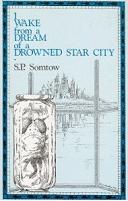 The White Rajah is Tom William's first published Novel. And in contrast to the book of the same name by Nigel Barley this is NOT the story of James Brooke, known as the White Rajah, but, as the only internally displayed subtitle (Being a true and honest account of my life with James Brooke of Sarawak by John Williamson) indicates it is an account, nearly a confessional, purportedly written by John Williamson, one of Brooke's sailors and his main translator (and, later, lover – no, the blurb gives this away, so I don't think that's much of a spoiler...).
The White Rajah is Tom William's first published Novel. And in contrast to the book of the same name by Nigel Barley this is NOT the story of James Brooke, known as the White Rajah, but, as the only internally displayed subtitle (Being a true and honest account of my life with James Brooke of Sarawak by John Williamson) indicates it is an account, nearly a confessional, purportedly written by John Williamson, one of Brooke's sailors and his main translator (and, later, lover – no, the blurb gives this away, so I don't think that's much of a spoiler...).
It is available from the publisher directly, or from Amazon (links below). Londoners can also acquire it from Foyles, no idea if any other bookshops stock it, too.
The story tells how John Williamson first met James Brooke in England, and hired on his first ship to head out East, where he stays at the end of the expedition. They meet again when Brooke returns with his 2nd ship, and Williamson joins him again for his trip to Borneo, to the (to James Brooke) fabled Sultan of Brunei. When Brooke helps him put down a rebellion in one part of his huge island he is given, in return, Sarawak to rule as his own. So the country now has its indigenous population (Dyaks), a ruling class (Malays), foreign traders (Chinese), and now also an English ruler – racial tensions and prejudices are programmed into the set-up from the word go. And so, after the initial adventures and victory they now get caught up in day-to-day business of ruling a country, of administration, taxing, and petty court politics and plotting.
I'm not going to spill more of the general story – it's been done before, it's in the history books (at least the general outlines which Tom Williams used before fleshing it out), and this is, in the end, not the story of the White Rajah (Brooke becomes Rajah more than a third into the book), but the story of (the fictional) John Williamson. It is told from his point of view (this is his account of the events), and in the first person. The storytelling, including the usage of slightly archaic language, strongly reminded me of another historic fiction book I recently read (Peter Ackroyd's House of Dr Dee), although the White Rajah is set about 100 years later.
The pace and level of exposition (or, sometimes, introspection) varies greatly throughout the story. The split seems to be predominantly between actual history which is being expanded upon, which flows and can be quite engrossing; and the purely fictional accounts in-between and around the recorded events, which can be moderately hard work to read, and came across rather stilted, bordering on tedious in parts.
The 'gay' setting itself is carefully handled, is incidentally present throughout the latter 2/3ds of the book, and works very well as part of the story; although it appears to have been one of the key reasons for the publisher to pick up the story.
The setting for the lion’s share of the story is 19th century Sarawak, which comes to life whenever the focus of the story veers away from Williamson's internal life. This part appears consistent and coherent; I would guess that this is an accurate and well researched (and well written!) representation of the area at the time. The story itself is a adventure story, told with the benefit of hindsight by John Williamson. It also is a story of self-discovery by Williamson, displaying a convincing mix of love, hate, and all the human foibles that go with such an adventure in a far-flung part of the world. It has a strong narrative, set against a very unusual background; James Brooke comes across as engaging and inspirational; also (or especially) to John Williamson, who himself appears rather passive, and much less driven (with exception of the events which lead up to the writing of this account).
What I was missing was additional information concerning the world Williamson's confessional plays in – a contemporary map of the part of the world where the story is set, and/or a historical brief of the geopolitical situation (which the story repeatedly refers to). Yes, I know, I can read up on this on the interwebs or in history books, but given that there's even an Author's note outlining which bits are facts of history, and which are purely fictional I think it should have been possible to find another 2 pages to provide some background on the setting for the story, either as an info-dump within the tale, or separate from it.
If you’re interested in the history of the area, enjoy historical fiction and/or adventure stories then this book should be on your reading list.
More Tom Williams
Title: The White Rajah
Subtitle: Being a true and honest account of my life with James Brooke of Sarawak by John Williamson
Author: Tom Williams
Author URL: http://thewhiterajah.blogspot.com/
Reviewer: Markus
Reviewer URL: http://skating.thierstein.net
Publisher: JMS Books
Publisher URL: http://www.jms-books.com
Publication Date: 2010
Book URL: http://www.jms-books.com/index.php?main_page=product_info&cPath=14&products_id=155
Book URL: http://www.amazon.co.uk/The-White-Rajah/dp/B004E3XGDW
Review Date: 110104
ISBN: 97811611520330
Pages: 233
Format: Paperback
Topic: Fiction
Topic: History
The book was received as a review copy from the author.













